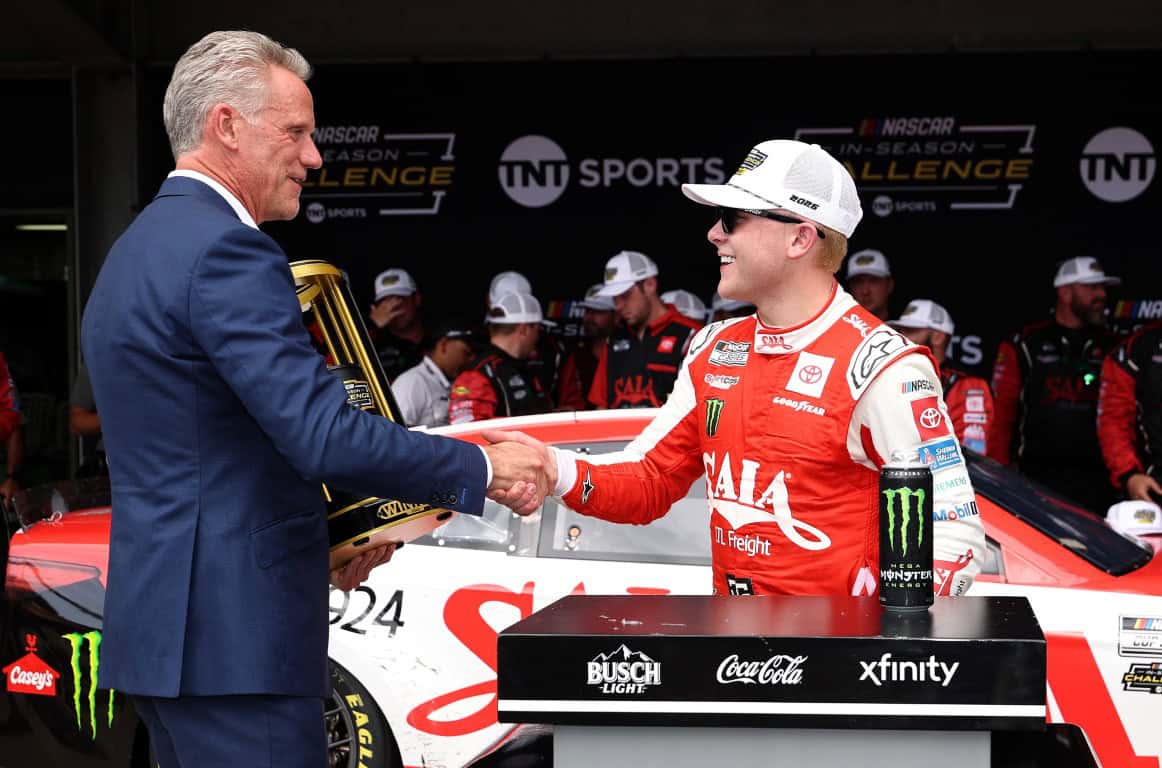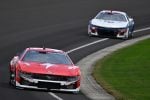NASCAR is probably relieved that Sunday’s (July 27) Brickyard 400 had an engaging finish. A race that ended with multiple overtime attempts after a short rain delay resulted in Bubba Wallace capturing the victory. Wallace broke a winless drought that was closing in on three years, providing a feel-good ending to an otherwise forgettable race.
Mostly lost in the shuffle was the end of NASCAR’s In-Season Challenge. New for TNT’s five-race portion of the 2025 season, NASCAR took the top 32 NASCAR Cup Series drivers and paired them up in a series of seeded head-to-head matchups. The driver who finished ahead of his competitor won the matchup for the week and advanced to the next round. The tournament ended at Indianapolis Motor Speedway on Sunday with Ty Gibbs racing to a 21st-place finish, defeating Ty Dillon in the final matchup and earning the $1 million prize.
From a fan’s perspective, the In-Season Challenge added very little value to the 2025 NASCAR season. It was not an accurate reflection of who actually performed well during the TNT races. The final battle between Gibbs and Dillon, both of whom have mostly struggled this season, was a surprise at best and forgettable at worst. However, the biggest problem with the bracket-style tournament is the underlying concept, one that NASCAR has struggled to understand for years. Ideas that work well in stick-and-ball sports are not a good fit for auto racing. The In-Season Challenge is only the latest example of that.
The whole tournament felt like NASCAR’s attempt to give TNT something extra, some additional twist for the network to promote during its slate of races, something to convince fans to follow along and stay tuned in through the dog days of summer.
Unfortunately, TNT’s portion of races began at EchoPark Speedway, a drafting track where many elements of the race are outside the driver’s control. In a predictable fashion, a big crash early in the race wiped out many of the top-seeded drivers, including number one seed Denny Hamlin. Dillon, the number 32 seed, escaped the crash and finished in a respectable eighth place, meaning that Hamlin was out of the tournament and Dillon was moving on. The tournament bracket contained several other upsets like this, including number 31 seed Noah Gragson over number two seed Chase Briscoe, number 29 seed Ricky Stenhouse Jr. over number four seed Christopher Bell, and number 26 seed Carson Hocevar over number seven seed Ryan Blaney.
To be clear, the objection is about how the upsets happened, not that they happened at all. In college basketball’s March Madness tournament (the obvious inspiration for the In-Season Challenge), teams face off in 1-vs-1 matchups. Fans of a heavily-favored team might be disappointed if they lose to an underdog, but even major upsets are seen as acceptable in March Madness because no other teams are influencing the score of each game. The team that wins is the better team on that day. Additionally, the team that loses is eliminated from the tournament completely, so the focus remains only on the winning teams.
Stock car racing does not work like that, especially not at a drafting track. Factors that have nothing to do with a given 1-vs-1 battle can have major implications in an environment where as many as 40 teams are competing against each other at the same time. As a result, the matchups become less about driver skill and more about timing and luck. That may create surprises and upsets, but those upsets simply do not feel earned. To return to EchoPark, can anybody really say that Gragson was better than Briscoe in that race because Gragson got less damaged in The Big One?
Furthermore, because the results at EchoPark were so jumbled, several of the drivers who were eliminated early went on to post better results than many of the drivers still in the tournament. The next four races were won by Shane van Gisbergen (who did not even qualify for the In-Season Challenge), Hamlin and Wallace, none of whom were still competing in the tournament at the time of their victories. If the point of the In-Season Challenge was to reward drivers who won races during TNT’s portion of the schedule, then it failed spectacularly.
Dillon, meanwhile, advanced to the final matchup with finishes of eighth, 20th, 17th and 20th. Those are thoroughly average results, and the fact that Dillon got to the final matchup with them does not speak well to the design of the tournament. Gibbs did better by posting finishes of 14th, second, seventh and fifth. That is a good level of consistency from a driver who struggled early in the season, but do not be fooled. Gibbs only led 33 laps in those races, 32 at EchoPark and a single lap at Dover Motor Speedway. He was not up front contending for race wins in a way that made the tournament exciting or meaningful. What the In-Season Challenge amounted to was no better than background noise.
Finally, the Dillon vs. Gibbs battle added little to the Brickyard 400. Dillon ran in the back of the pack all day and got damaged in a restart stack up at the beginning of the second stage. With the No. 10 multiple laps down, Gibbs did not have much of a battle the rest of the way. Gibbs pledged $10,000 of his winnings to a charity of Dillon’s choice after the race, so at least the tournament built some goodwill among the drivers. Otherwise, the In-Season Challenge delivered on so few of its promises that it can only be considered a flop.
Understandably, TNT wanted something unique to distinguish its portion of the Cup Series season. That said, head-to-head matchups in auto racing work best when they occur on the track during the race, not engineered behind the scenes. NASCAR must get over its obsession with copying ideas from stick-and-ball sports that are a bad fit for auto racing.
Of course, any change of heart from the sanctioning body will have to wait until next year. The playoffs are a month away.
Bryan began writing for Frontstretch in 2016. He has penned Up to Speed for the past eight years. A lifelong student of auto racing, Bryan is a published author and automotive historian. He is a native of Columbus, Ohio and currently resides in Southern Kentucky.





